#christoph eschenbach
Text
youtube
Richard Strauss, Der Rosenkavalier, op. 59 (acto II, «Mir ist die Ehre widerfahren»). Libreto de Hugo von Hofmannsthal.
Christoph Eschenbach, director
Barbara Bonney, soprano
Susan Graham, mezzosoprano
#richard strauss#der rosenkavalier#hugo von hofmannsthal#christoph eschenbach#barbara bonney#susan graham
7 notes
·
View notes
Text

youtube
#Bernhard Heiliger#traum#dream#Traum IV#skulptur#plastik#upward#dmitri shostakovitch#shostakovich#violin#classical music#sculpture#modern art#Sergey Khachatryan#Christoph Eschenbach#opus#77
4 notes
·
View notes
Text
Violino minimale
Philip Glass (31 gennaio 1937): Concerto per violino e orchestra n. 1 (1987). Robert McDuffie, violino; Houston Symphony Orchestra, dir. Christoph Eschenbach.
View On WordPress
0 notes
Text
ベルリン・コンツェルトハウス管弦楽団の福岡での演奏会を聴いて
シューマンのニ短調のヴァイオリン協奏曲の第一楽章は、別の世界へ開かれるように終わる。独奏ヴァイオリンが最後の和音を打ち込むと、管楽器の和音が中空に解き放たれるのだが、その響きは、ほの暗い情熱に駆り立てられながら救いを希うように続いてきた音楽のそれとはすでに異なった色調を示しながら、柔らかく広がっていた。そのなかから作曲家が天使に告げられたという第二楽章の主題が、温かく響いてくる。アクロス福岡のシンフォニーホールの舞台で、ベルリン・コンツェルトハウス管弦楽団のチェロ奏者、フーリデマン・ルートヴィヒがその旋律を心を込めて奏でていた。その姿は、七年ほど前にベルリンのコンツェルトハウスの舞台で献身的な演奏を繰り広げていた彼の姿と重なって見えた。
2016年の春から十か月ほど研究のためにベルリンに滞在していたが、そのあいだ、当時音楽監督を務めていたイヴァン・フィッシャーが指揮するコンツェルトハウ…

View On WordPress
#Acros Fukuoka#Carl Maria von Webe#Christoph Eschenbach#Ivan Fischer#Johannes Brahms#Konzerthausorchester Berlin#Midori Goto#Robert Schumann
0 notes
Text
Deutschribing Germany
Literature
Middle Ages (5th-15th centuries)
Medieval German literature can be divided into two periods: Old High German literature (8th-11th centuries) and Middle High German literature (12th-14th centuries). The only surviving works from the first period are the Hildebrandslied (Lay of Hildebrand), which is the earliest poetic text in German and tells of the tragic encounter in battle between a father and a son, and Muspilli, which deals with the fate of the soul after death and at the Last Judgment.

Middle High German literature saw a 60-year golden age known as mittelhochdeutsche Blütezeit, in which lyric poetry in the form of Minnesang—the German version of courtly love—blossomed thanks to poets such as Walther von der Vogelweide and Wolfram von Eschenbach. Another important genre during this time was epic poetry, of which the most famous example is the Nibelungenlied (The Song of the Nibelungs), which narrates the story of prince Siegfried and princess Kriemhild, among other characters.
Renaissance (15th-16th centuries)
Early New High German literature includes works such as Der Ring (The Ring) by Heinrich Wittenwiler, a 9,699-line satirical poem where each line is marked with red or green ink depending on the seriousness of the material, and Das Narrenschiff (Ship of Fools) by Sebastian Brant, a satirical allegory that contains the ship of fools trope.
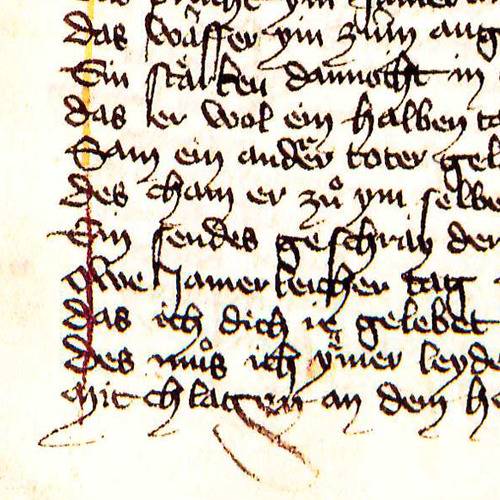
Other important authors are satirist and poet Thomas Murner, humanist Sebastian Franck, and poets Johannes von Tepl and Oswald von Wolkenstein.
Baroque (16th-17th centuries)
The Baroque period is characterized by works that reflected the experiences of the Thirty Years’ War and tragedies (Trauerspiele) on Classical themes, the latter were written by authors such as Andreas Gryphius and Daniel Caspar von Lohenstein. The most famous work is Der abenteuerliche Simplicissimus (Simplicius Simplicissimus) by Hans Jakob Christoffel von Grimmelshausen, a picaresque novel that narrates the adventures of the naïve Simplicissimus.
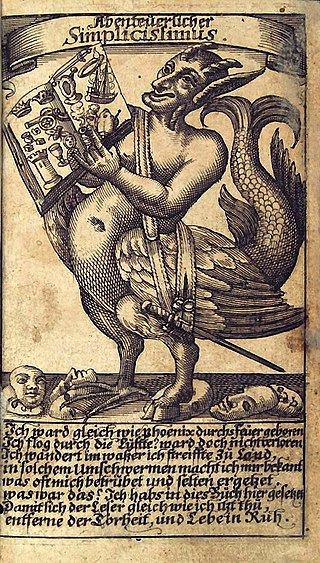
Enlightenment (17th-18th centuries)
The most important writers of the Enlightenment are Christian Felix Weiße, Christoph Martin Wieland, Gotthold Ephraim Lessing, and Johann Gottfried Herder.
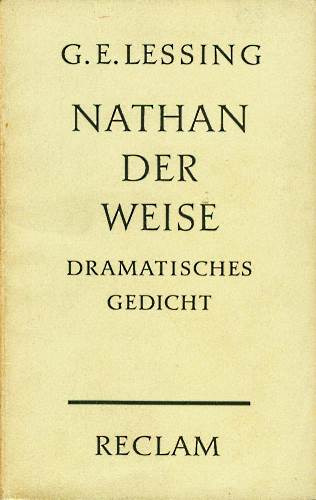
The Age of Reason saw the emergence of two literary movements: Empfindsamkeit (sentimental style) and Sturm und Drang (storm and stress). The first one intended to express true and natural feelings and featured sudden mood changes. The latter movement was characterized by individual subjectivity and extremes of emotion in response to the rationalism imposed by the Enlightenment.
Weimar Classicism (18th-19th centuries)
The main drivers behind Weimar Classicism, which synthesized ideas from Classicism, the Enlightenment, and Romanticism, were Johann Christoph Friedrich von Schiller, and Johann Wolfgang von Goethe.
During this period, Schiller published Die Bürgschaft (The Pledge), a ballad based on the legend of Damon and Pythias found in the Latin Fabulae, and Don Karlos (Don Carlos), a historical tragedy about Carlos, Prince of Asturias, while Goethe wrote Egmont, a play heavily influenced by Shakespearean tragedy, and Faust, a tragic play in which the main character sells his soul to the devil that is considered the greatest work of German literature.
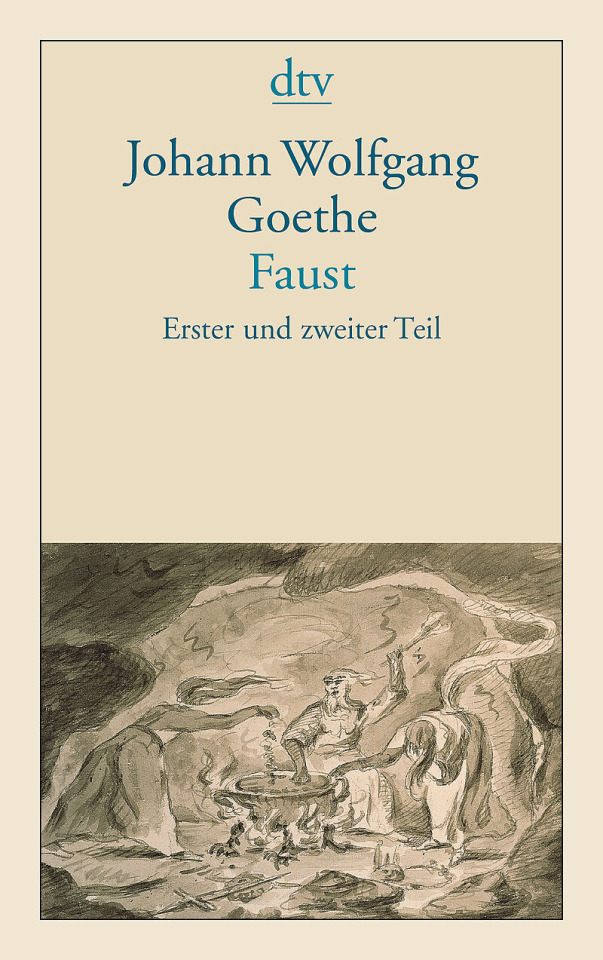
Romanticism (18th-19th centuries)
Important Romantic writers include E. T. A. Hoffmann, author of Der Sandmann (The Sandman), a short story based on the mythical character of said name that puts people to sleep by sprinkling sand on their eyes; Heinrich von Kleist, who wrote Das Kätchen von Heilbronn (The Little Catherine of Heilbronn), a drama set in Swabia in the Middle Ages; Joseph Freiherr von Eichendorff, author of Das Marmorbild (The Marble Statue), a novella about a man who struggles to choose between piety and a world of art, and Novalis, author of Hymnen an die Nacht (Hymns to the Night), a collection of six poems.

Folk tales collected by the Brothers Grimm became very popular during the Romantic period, as they represented a pure form of national literature and culture.
Biedermeier and Young Germany (19th century)
The Biedermeier period contrasts with the Romantic era and is best exemplified by poets Adelbert von Chamisso, Annette von Droste-Hülshoff, and Wilhelm Müller.
Young Germany was a youth movement whose main proponents were Karl Gutzkow, Ludolf Wienbarg, and Theodor Mundt.
Realism and Naturalism (19th century)
The most representatives realist authors are Gustav Freytag, Theodor Fontane, and Theodor Storm, while Gerhart Hauptmann was the most important naturalist writer.
Weimar literature (20th century)
During the Weimar Republic, writers such as Erich Maria Remarque, Heinrich Mann, and Thomas Mann presented a bleak look at the world and the failure of politics and society.

Expressionism (20th century)
As a modernist movement, Expressionism presented the world solely from a subjective perspective, distorting it for emotional effect. Famous authors include novelists Alfred Döblin and Franz Kafka, playwrights Ernst Toller and Georg Kaiser, and poets August Stramm and Else Lasker-Schüler.

Neue Sachlichkeit (20th century)
Neue Sachlichkeit (New Objectivity) arose as a reaction against expressionism and was characterized by its political perspective on reality and portrayal of dystopias in an emotionless reporting style, showing cynicism about humanity. Authors associated with this movement include Erich Kästner, Hans Fallada, and Irmgard Keun.
Nazi Germany (1933-1945)
During the Nazi regime, some authors went into exile, while others submitted to censorship. The former, who either were of Jewish ancestry or opposed the regime for political reasons, include writers Alice Rühle-Gerstel and Anna Seghers, playwright Bertolt Brecht, and poet and novelist Hermann Hesse/Emil Sinclair.
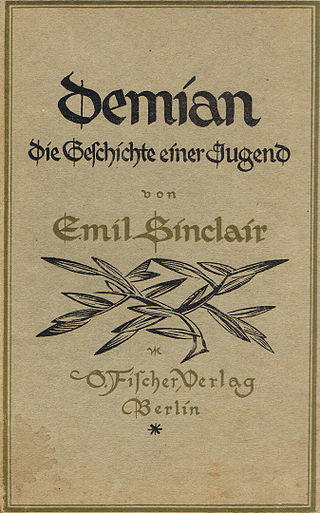
Those who stayed and engaged in inner emigration include writer Friedrich Reck-Malleczewen, poet and essayist Gottfried Benn, writer Hans Blüher, and poet and novelist Ricarda Huch.
Post-war literature (20th century)
The most famous authors in West Germany were Edgar Hilsenrath, Günter Grass, Heinrich Böll, and Group 47, a group of participants in writers’ meetings invited by Hans Werner Richter.
East German writers include Christa Wolf, Heiner Müller, Reiner Kunze, and Sarah Kirsch.
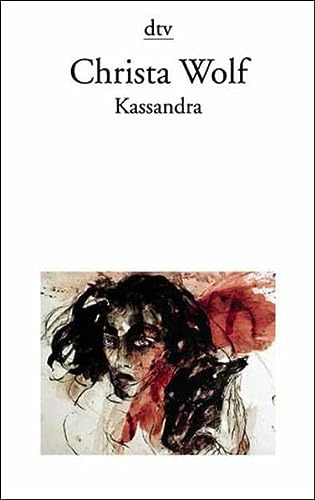
Contemporary literature (21st century)
Fantasy and science fiction authors include Andreas Eschbach, Frank Schätzing, and Wolfgang Hohlbein. Some of the most important poets are Aldona Gustas, Hans Magnus Enzensberger, and Jürgen Becker. Thriller is best represented by Ingrid Noll. Fiction novelists include Herta Müller, Siegfried Lenz, and Wilhelm Genazino.
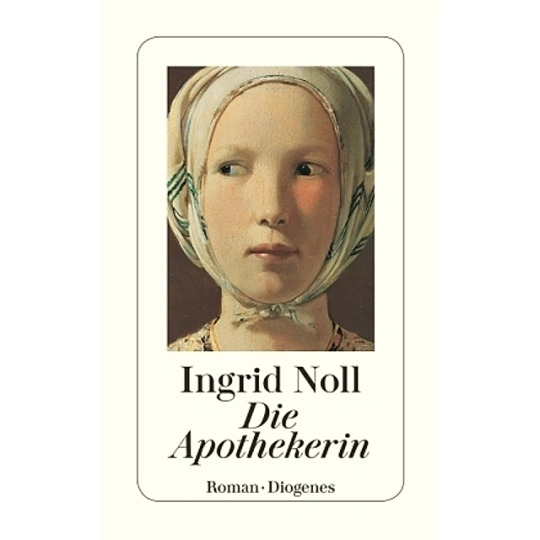
20 notes
·
View notes
Video
youtube
Alexander Zemlinsky (1871-1942) - Lyric Symphony, Op. 18: VII. Friede, Mein Herz ·
Matthias Goerne, Christine Schaefer
Orchestre de Paris, Christoph Eschenbach
2 notes
·
View notes
Text
A previously untrodden path led me indirectly to the mistletoe, so let's follow the path backwards to get back home.
From the Celtic languages there are several words or phrases for “Mistletoe”. In Scottish Gaelic the name which gives an indication of the high esteem the plant was held amongst the ancient Scots: Uil–ioc – means to make whole. Also used was - Draoidh-lus – Druid’s herb, and - Sùgh an Daraich - Juice, sap or the dearest of the Oak. In Irish, it is Drualus, which is “herb of the Druids”. In Welsh, it is uchelwydd. Uchel and translates as “high”. The New Welsh Dictionary by Christopher Davies says of mistletoe: “Uchelwydd. Planhigyn yn tyfu ar goed eraill ac iddo aeron gwyn.” “Mistletoe. A plant which grows on other trees and with it berries white.” In Brittany, it is called Herbe de la Croix, after an old legend that the cross was made from this wood, after which God punished it by changing it into a parasite. The juice of the berries bears a striking resemblance to semen and there is no doubt it was associated with a Druidic priesthood and that Lugus, the reincarnating god, lives in semidivine humans. His tree is the Oak from which the druids, parasitically and symbolically grew as the mistletoe, needing Lugus as their life blood, represented by the mystical white fluid of the berry, semen vitalis, the vital seed of rejuvenation of the kingdom.
It all started when i was exploring my roots in Southern Germany and its Celtic prehistory. Doing that sent me off to read Parsifal by Wolfram von Eschenbach, an 11th century Southern German poet. His Parsifal is none other than Lugh, the Gaulic Lugus. He bears all the characteristic in his search for the Grail, the content of which remains to be discovered but my guess it is similar to the white boddhicitta, or methods of awakening.

3 notes
·
View notes
Link
Es war, als hätt' der Himmel,
Die Erde still geküßt,
Daß sie im Blütenschimmer
Von ihm nur träumen müßt'.
Die Luft ging durch die Felder,
Die Ähren wogten sacht,
Es rauschten leis die Wälder,
So sternklar war die Nacht.
Und meine Seele spannte
Weit ihre Flügel aus,
Flog durch die stillen Lande,
Als flöge sie nach Haus.
(Joseph von Eichendorff)
2 notes
·
View notes
Video
youtube
Saint-Saëns: 1. Cellokonzert ∙ hr-Sinfonieorchester ∙ Bruno Philippe ∙ Christoph Eschenbach - YouTube
0 notes
Video
youtube
Franz Schreker, Der ferne Klang (Nachtstück).
Christoph Eschenbach. director
5 notes
·
View notes
Text
SUMMER NIGHT CONCERT 2023

SUMMER NIGHT CONCERT 2023 CON YANNICK NÉZET-SÉGUIN, LA MEZZOSOPRANO ELÏNA GARANČA Y LA FILARMÓNICA DE VIENA
Sony Classical se complace en anunciar el lanzamiento en DVD y Blue-Ray del Summer Night Concert 2023 con la Filarmónica de Viena junto al director Yannick Nézét-Séguin y la Mezzo-soprano Elīna Garanča como solista. Disponible el 14 de julio.
Consíguelo AQUÍ
El Summer Night Concert ya disponible también en CD y digital, tuvo lugar el día 8 de junio de, 2023. Se trata de un acontecimiento anual al aire libre, que se celebra desde 2008. El parque del Palacio de Schönbrunn, en Viena/Austria, se convierte en el mágico escenario del concierto. Han dirigido en años anteriores la orquesta grandes directores como Georges Prêtre, Daniel Barenboim, Franz Welser-Möst, Lorin Maazel, Christoph Eschenbach, Zubin Mehta, Semyon Bychkov, Gustavo Dudame, Daniel Harding y Andris Nelsons.
El evento fue presentado por primera vez por el maestro Yannick Nézet-Séguin y la mezzosoprano Elīna Garanča, que interpretaron tres arias de Carmen de Georges Bizet, Sapho de Charles Gounod y Samson et Dalila de Camille Saint-Saëns. También se estrenó una composición de Lili Boulanger, una conmovedora representación de la naturaleza realizada por la joven compositora que se convirtió en la primera mujer ganadora del prestigioso Premio de Roma en 1913.
El programa de este año contó con la presencia de la mezzo-soprano letona Elīna Garanča, que participó por primera vez en el Concierto Nocturno de Verano. Elīna Garanča se ha consolidado como una de las principales estrellas del mundo de la música gracias a sus actuaciones con las principales compañías de ópera y orquestas sinfónicas de todo el mundo. Ha sido aclamada por la crítica y el público por su hermosa voz, su talento musical inteligente y sus fascinantes interpretaciones escénicas. Entre otros papeles, es especialmente famosa por su interpretación de la Carmen de Bizet, que ha cantado en la mayoría de los principales teatros, como el Royal Opera House Covent Garden, la Bayerische Staatsoper, el Palau de les Arts Reina Sofía de Valencia o el Metropolitan Opera, con gran éxito de crítica; el NY Times la nombró "la mejor Carmen en 25 años". Para ver su biografía completa, haz clic aquí.
El director canadiense Yannick Nézet-Séguin ha trabajado con varias de las principales orquestas del mundo y mantiene una estrecha colaboración con la Wiener Philharmoniker, la Berliner Philharmoniker, la Bayerischer Rundfunk Sinfonieorchester y la Orquesta de Cámara de Europa. En septiembre de 2018, Yannick Nézet-Séguin se convirtió en el tercer director musical de la Ópera Metropolitana de Nueva York. Director musical de la Orquesta de Filadelfia desde 2012, se convirtió en director artístico y musical en febrero de 2023 y renovó su contrato hasta 2030. Como director musical y director principal de la Orchestre Métropolitain de Montreal desde 2000, firmó un contrato "vitalicio" en 2019. Es director honorario de la Rotterdams Philharmonisch Orkest tras haber sido su director musical de 2008 a 2018. También es Miembro Honorario de la Orquesta de Cámara de Europa. Para ver su biografía completa, haz clic aquí.
TRACKLIST:
1. Georges Bizet, Suite Nr. 1 aus der Oper Carmen (Arreglo de Ernest Guiraud 1885)
Nr. 5. Les Toréadors (Vorspiel zum 1. Akt)
Nr. 2. Intermezzo (Vorspiel zum 3. Akt)
Nr. 1a. Aragonaise (Vorspiel zum 4. Akt)
2. Georges Bizet, Habanera aus der Oper Carmen
3. Lili Boulanger, D‘un matin de printemps. Fassung für Orchester 1918
4. Hector Berlioz, Ouvertüre zur Oper Le Corsaire op. 21
5. Charles Gounod, „O ma lyre immortelle“ Arie aus der Oper Sapho
6. Maurice Ravel, Daphnis et Cloé. Suite Nr. 2
7. Camille Saint-Saëns, „Mon cœur s’ouvre à ta voix” Arie aus der Oper Samson et Dalila
8. Maurice Ravel, Bolero
0 notes
Link
El Sistema y grandes maestros internacionales se unen para dos espectáculos en Caracas
0 notes
Text
Il cacciatore celeste
Kaija Saariaho (1952 - 2 giugno 2023): Orion per orchestra (2002). Orchestre de Paris, dir. Christoph Eschenbach.
Memento mori
Winter Sky
The Hunter
View On WordPress
0 notes
Text
0 notes
Text
youtube
Franz Schreker (1878-1934) : 2 Lyrische Gesänge - No. 2, Das Gras ·
Chen Reiss ·
Konzerthausorchester Berlin · Christoph Eschenbach ·
1 note
·
View note
Text
Francisco de Zurbarán (Spanish, 1598–1664) and Josef Anton Bruckner (Austrian, 1824–96) and Mayo Clinic Consumer Health: Can music help someone with Alzheimer’s disease?, Francisco de Zurbarán (Spanish, 1598–1664), Still Life with Lemons, Oranges and a Rose, 1633, Norton Simon Museum, Pasadena., Christ and the Virgin in the House at Nazareth, c. 1631–1640, Cleveland Museum of Art., Museo de Bellas Artes de Sevilla Virgen del Rosario, Hacia 1650, and Josef Anton Bruckner (Austrian, 1824–96), Berliner Philharmoniker Bruckner’s “Romantic” 4th Symphony, 2021 performance with Jakub Hrůša, hr-Sinfonieorchester – Frankfurt Radio Symphony Bruckner: 4. Sinfonie (Fassung 1878/80) ∙ hr-Sinfonieorchester ∙ Eliahu Inbal, Bruckner: 7. Sinfonie ∙ hr-Sinfonieorchester ∙ Christoph Eschenbach, Mayo Clinic Consumer Health: Can music help someone with Alzheimer’s disease? By Laurel Kelly
Francisco de Zurbarán (Spanish, 1598–1664) and Josef Anton Bruckner (Austrian, 1824–96) and Mayo Clinic Consumer Health: Can music help someone with Alzheimer’s disease?, Francisco de Zurbarán (Spanish, 1598–1664), Still Life with Lemons, Oranges and a Rose, 1633, Norton Simon Museum, Pasadena., Christ and the Virgin in the House at Nazareth, c. 1631–1640, Cleveland Museum of Art., Museo de Bellas Artes de Sevilla Virgen del Rosario, Hacia 1650, and Josef Anton Bruckner (Austrian, 1824–96), Berliner Philharmoniker Bruckner’s “Romantic” 4th Symphony, 2021 performance with Jakub Hrůša, hr-Sinfonieorchester – Frankfurt Radio Symphony Bruckner: 4. Sinfonie (Fassung 1878/80) ∙ hr-Sinfonieorchester ∙ Eliahu Inbal, Bruckner: 7. Sinfonie ∙ hr-Sinfonieorchester ∙ Christoph Eschenbach, Mayo Clinic Consumer Health: Can music help someone with Alzheimer’s disease? By Laurel Kelly
https://blog.naver.com/artnouveau19/222924196383
https://en.wikipedia.org/wiki/Francisco_de_Zurbarán
https://en.wikipedia.org/wiki/Still_Life_with_Lemons,_Oranges_and_a_Rose
https://en.wikipedia.org/wiki/The_House_in_Nazareth
https://www.facebook.com/photo/?fbid=177183324895720&set=a.167502525863800
https://www.facebook.com/BerlinPhil/videos/2925424737752504
https://youtu.be/DEssCDEAyig
https://youtu.be/uaV3eEJB55c
https://newsnetwork.mayoclinic.org/discussion/consumer-health-can-music-help-someone-with-alzheimers-disease/?sf172569375=1&fbclid=IwAR2pmDI0UJG7U3xwwlnXaP-_r2avr-5H4BtRPWT1IpOypCBowesgKliP-Mk
Francisco de Zurbarán (Spanish, 1598–1664)
Francisco de Zurbarán (/ˌzʊərbəˈrɑːn/ ZOOR-bə-RAHN, Spanish: [fɾanˈθisko ðe θuɾβaˈɾan]; baptized 7 November 1598 – 27 August 1664[3]) was a Spanish painter. He is known primarily for his religious paintings depicting monks, nuns, and martyrs, and for his still-lifes. Zurbarán gained the nickname "Spanish Caravaggio", owing to the forceful use of chiaroscuro in which he excelled.
He was the father of the painter Juan de Zurbarán.
https://en.wikipedia.org/wiki/Francisco_de_Zurbarán
Francisco de Zurbarán (Spanish, 1598–1664), Still Life with Lemons, Oranges and a Rose, 1633, Oil on canvas, 62.2 cm × 107 cm (23.6 in × 42.1 in), Norton Simon Museum, Pasadena.
https://en.wikipedia.org/wiki/Still_Life_with_Lemons,_Oranges_and_a_Rose
Francisco de Zurbarán (Spanish, 1598–1664), Christ and the Virgin in the House at Nazareth, c. 1631–1640, 165 cm (65 in) × 218.2 cm (85.9 in), Cleveland Museum of Art.
https://en.wikipedia.org/wiki/The_House_in_Nazareth
Visión de San Pedro Nolasco, 1629, Museo del Prado
https://en.wikipedia.org/wiki/Francisco_de_Zurbarán#/media/File:Visión_de_San_Pedro_Nolasco.jpg
Immaculate Conception, 1630, Museo del Prado
https://en.wikipedia.org/wiki/Francisco_de_Zurbarán#/media/File:Inmaculada_(Zurbarán).jpg
Museo de Bellas Artes de Sevilla
Tal día como hoy, 7 de noviembre, era bautizado, en 1598, en la iglesia de Nuestra Señora de la Granada en Fuente de Cantos, Francisco de Zurbarán.
Virgen del Rosario, por Zurbarán. Hacia 1650.
https://www.facebook.com/photo/?fbid=177183324895720&set=a.167502525863800
Anton Bruckner (Austrian, 1824–96), Berliner Philharmoniker Bruckner’s “Romantic” 4th Symphony, 2021 performance with Jakub Hrůša, Bruckner: 4. Sinfonie (Fassung 1878/80) ∙ hr-Sinfonieorchester ∙ Eliahu Inbal, Bruckner: 7. Sinfonie ∙ hr-Sinfonieorchester ∙ Christoph Eschenbach
Anton Bruckner (Austrian, 1824–96)
Berliner Philharmoniker
Feelings of longing for nature and transcendence » https://www.digitalconcerthall.com/en/concert/53773?utm_medium=social in Bruckner’s “Romantic” 4th Symphony, heard here in a 2021 performance with Jakub Hrůša.
https://www.facebook.com/BerlinPhil/videos/2925424737752504
https://twitter.com/BerlinPhil/status/1589698507526529024
Bruckner: 4. Sinfonie (Fassung 1878/80) ∙ hr-Sinfonieorchester ∙ Eliahu Inbal
https://youtu.be/DEssCDEAyig
hr-Sinfonieorchester – Frankfurt Radio Symphony
356K subscribers
345,550 views Dec 8, 2016
Anton Bruckner:
4. Sinfonie (Fassung 1878/80) ∙
»Romantische«
(Auftritt) 00:00 ∙
I. Bewegt, nicht zu schnell 00:43 ∙
II. Andante quasi Allegretto 18:40 ∙
III. Scherzo. Bewegt – Trio. Nicht zu schnell. Keinesfalls schleppend. – Scherzo 33:56 ∙
IV. Finale. Bewegt, doch nicht zu schnell 45:10 ∙
hr-Sinfonieorchester – Frankfurt Radio Symphony ∙
Eliahu Inbal, Dirigent ∙
Alte Oper Frankfurt, 25. November 2016 ∙
Bruckner: 7. Sinfonie ∙ hr-Sinfonieorchester ∙ Christoph Eschenbach
https://youtu.be/uaV3eEJB55c
hr-Sinfonieorchester – Frankfurt Radio Symphony
356K subscribers
512,658 views Oct 9, 2018
Anton Bruckner:
7. Sinfonie E-Dur ∙
(Auftritt) 00:00 ∙
I. Allegro moderato 00:30 ∙
II. Adagio. Sehr feierlich und sehr langsam 21:23 ∙
III. Scherzo. Sehr schnell 43:10 ∙
IV. Finale. Bewegt, doch nicht schnell 53:33 ∙
hr-Sinfonieorchester – Frankfurt Radio Symphony ∙
Christoph Eschenbach, Dirigent ∙
hr-Sinfoniekonzert ∙
Alte Oper Frankfurt, 27. September 2018 ∙
Josef Anton Bruckner (Austrian, 1824–96)
Josef Anton Bruckner (German: [ˈantoːn ˈbʁʊknɐ] (listen); 4 September 1824 – 11 October 1896) was an Austrian composer, organist, and music theorist best known for his symphonies, masses, Te Deum and motets. The first are considered emblematic of the final stage of Austro-German Romanticism because of their rich harmonic language, strongly polyphonic character, and considerable length.[1] Bruckner's compositions helped to define contemporary musical radicalism, owing to their dissonances, unprepared modulations, and roving harmonies.
Unlike other musical radicals such as Richard Wagner and Hugo Wolf, Bruckner showed extreme humility before other musicians, Wagner in particular. This apparent dichotomy between Bruckner the man and Bruckner the composer hampers efforts to describe his life in a way that gives a straightforward context for his music. Hans von Bülow described him as "half genius, half simpleton".[2] Bruckner was critical of his own work and often reworked his compositions. There are several versions of many of his works.
His works, the symphonies in particular, had detractors, most notably the influential Austrian critic Eduard Hanslick and other supporters of Johannes Brahms, who pointed to their large size and use of repetition,[3] as well as to Bruckner's propensity for revising many of his works, often with the assistance of colleagues, and his apparent indecision about which versions he preferred. On the other hand, Bruckner was greatly admired by subsequent composers, including his friend Gustav Mahler.
https://en.wikipedia.org/wiki/Anton_Bruckner
Mayo Clinic Consumer Health: Can music help someone with Alzheimer’s disease? By Laurel Kelly
Mayo Clinic
@MayoClinic
·
Nov 8
Consumer Health: Can music help someone with #AlzheimersDisease? https://mayocl.in/3UwQ0xW
@MayoClinicNeuro
https://twitter.com/MayoClinic/status/1589720759903010816
Mayo Clinic
Consumer Health: Can music help someone with Alzheimer’s disease? https://mayocl.in/3FWjgdw
By Laurel Kelly
Consumer Health: Can music help someone with Alzheimer’s disease?
November 7, 2022
Alzheimer's disease is a progressive disorder that causes brain cells to waste away and die. Alzheimer's disease is the most common cause of dementia, which is a term used to describe a group of symptoms that affect memory, thinking and social abilities severely enough to interfere with daily function.
As many as 5.8 million people in the U.S. were living with Alzheimer’s disease in 2020, according to the Centers for Disease Control and Prevention. And this number is projected to nearly triple to 14 million people by 2060.
Memory loss is the key symptom of Alzheimer's disease. An early sign of the disease is difficulty remembering recent events or conversations. As the disease progresses, memory impairment persists and worsens, affecting the ability to function at work or at home.
Musical memories often are preserved in Alzheimer's disease, though, because key brain areas linked to musical memory are relatively undamaged by the disease. Research suggests that listening to or singing songs can provide emotional and behavioral benefits for people with Alzheimer's disease and other types of dementia.
Music also can benefit caregivers by reducing anxiety and distress, lightening the mood, and providing a way to connect with loved ones who have Alzheimer's disease — especially those who have difficulty communicating.
If you'd like to use music to help a loved one who has Alzheimer's disease, consider these tips:
Think about your loved one's preferences.
What kind of music does your loved one enjoy? What music evokes memories of happy times in his or her life? Involve family and friends by asking them to suggest songs or make playlists.
Set the mood.
To calm your loved one during mealtime or a morning hygiene routine, play music or sing a song that's soothing. When you'd like to boost your loved one's mood, use more upbeat or faster-paced music.
Avoid overstimulation.
When playing music, eliminate competing noises. Turn off the TV. Shut the door. Set the volume based on your loved one's hearing ability. Choose music that isn't interrupted by commercials, which can cause confusion.
Encourage movement.
Help your loved one to clap along or tap his or her feet to the beat. If possible, consider dancing with your loved one.
Sing along.
Singing along to music together with your loved one can boost the mood and enhance your relationship. Some early studies also suggest musical memory functions differently than other types of memory, and singing can help stimulate unique memories.
Pay attention to your loved one's response.
If your loved one seems to enjoy particular songs, play them often. If your loved one reacts negatively to a particular song or type of music, choose something else.
Connect with other caregivers talking about Alzheimer's disease in the Caregivers: Dementia support group on Mayo Clinic Connect, an online patient community moderated by Mayo Clinic.
https://newsnetwork.mayoclinic.org/discussion/consumer-health-can-music-help-someone-with-alzheimers-disease/?sf172569375=1&fbclid=IwAR2pmDI0UJG7U3xwwlnXaP-_r2avr-5H4BtRPWT1IpOypCBowesgKliP-Mk
0 notes